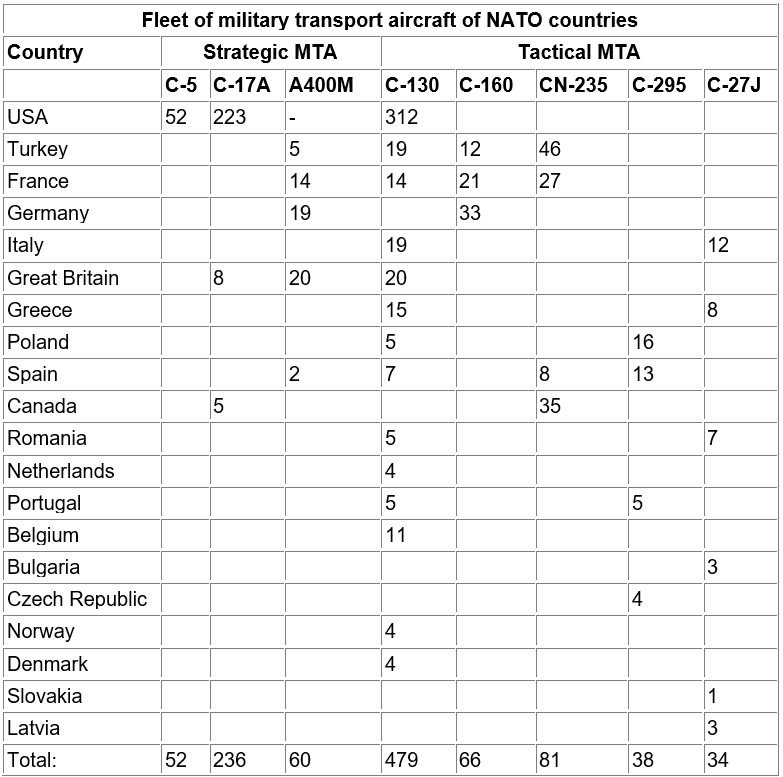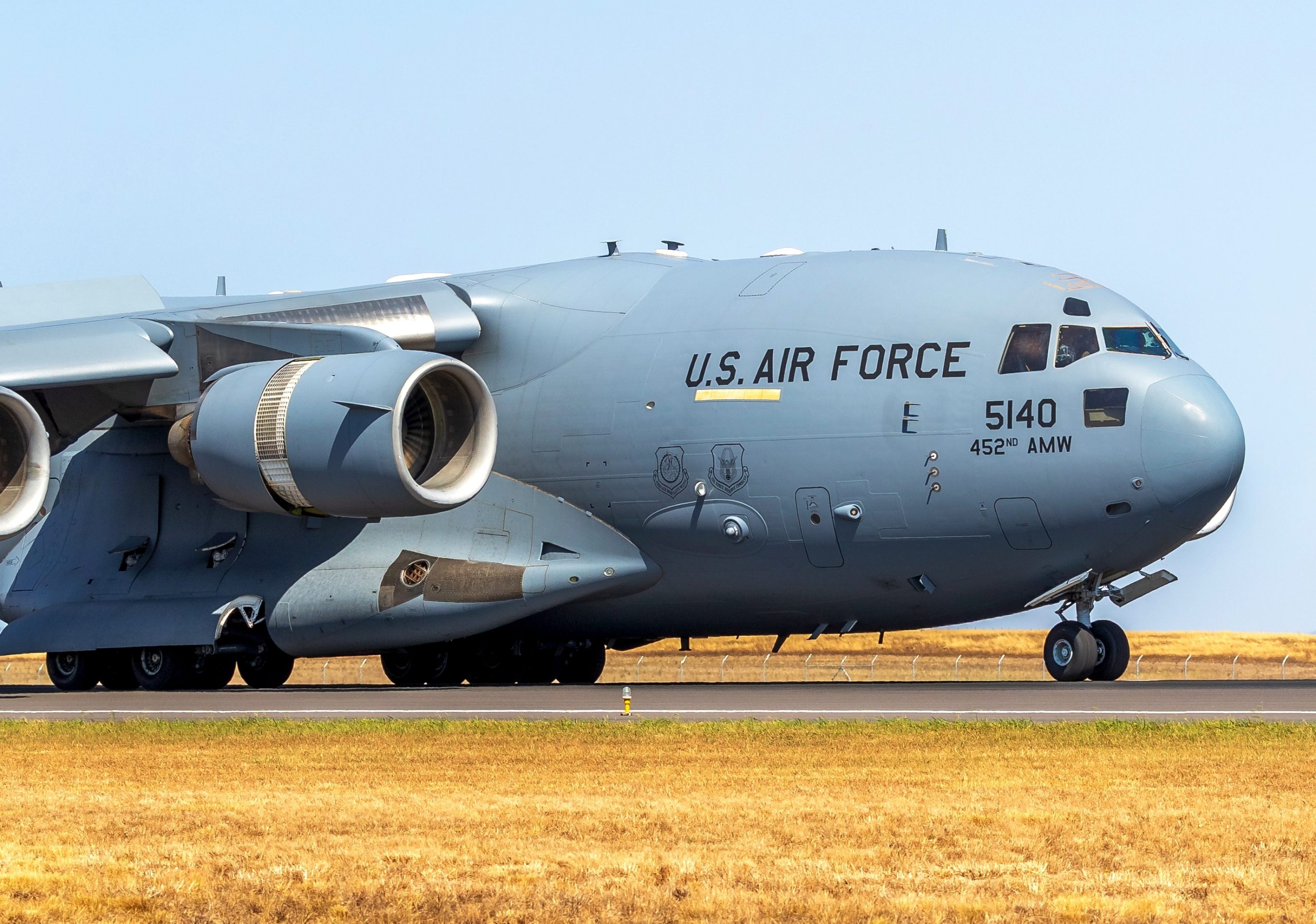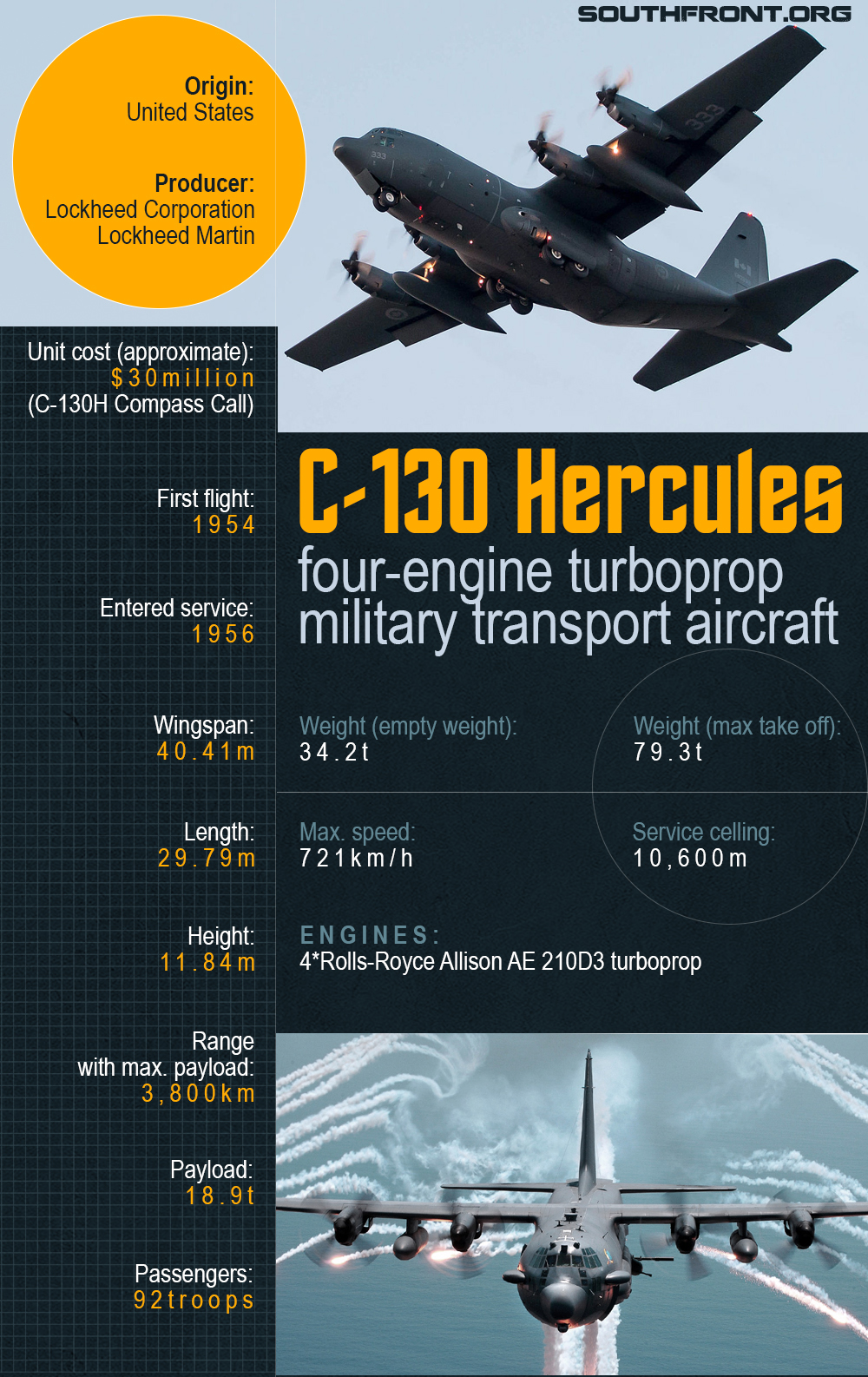Written by Colonel V. Satarov, Candidate of military sciences, Associate Professor and Lieutenant Colonel A. Makarov; Originally appeared at Foreign Military Review #2 2019, translated by AlexD exclusively for SouthFront
The large-scale participation of NATO in military conflicts in Yugoslavia, Afghanistan, Libya and other countries demonstrates the increasing importance of military transport aviation (MTA) in ensuring the strategic mobility of the Alliance’s combined armed forces.
According to the provisions of the current strategic concept of the Alliance, in order to ensure the security of all participating countries, the efforts of its command should be focused on three main tasks: collective defence, crisis management and international security through cooperation. The implementation of each of them involves the active involvement of NATO forces in all conflicts affecting the interests of the Alliance, and requires a significant increase in their ability to conduct operations in remote theaters of war.
In this regard, the leadership of the bloc strives to have at its disposal a powerful and mobile force ready for deployment in any region of the world. In particular, much attention is paid to the development of the NATO priority engagement force (NATO Response Force), created in 2003, which now includes more than 40,000 personnel.
The strategic mobility of the Allied Forces of the bloc is largely determined by the capabilities of military transport aviation. Air transport is the most effective means of ensuring the rapid deployment of troops (forces) to any area of the world.
Currently, the strategic MTA Alliance fleet includes more than one thousand aircraft of various types.
It should be noted that the largest volume of air deployments of troops and cargo in the interests of participating countries is performed by aircraft of the US Air Force airlift command.
The majority of the MTA fleet of the bloc’s countries consists of tactical transport aircraft C-130 Hercules, C-160 Transall and CN-235.
The delivery of the new MTA A400M Atlas will allow European countries, members of NATO, to significantly increase the capacity for deployments. Its cargo compartment is specially designed for transporting various equipment and large-sized military equipment, with the exception of main battle tanks and heavy self-propelled guns.
In total, 170 A400M Atlas aircraft are planned to be purchased for the air forces of the bloc (53 – German; 50 – France; 27 – Spain; 22 – Great Britain; 10 – Turkey; 7 – Belgium; 1 – Luxembourg).
In order to increase the strategic mobility of the NATO air force, the Alliance has created a multinational formation – the strategic (heavy) air transport wing (HAW – Heavy Airlift Wing), which is based in Hungary on the AB Papa. The formation includes ten countries of the Alliance (Bulgaria, Estonia, Hungary, Lithuania, the Netherlands, Norway, Poland, Romania, Slovenia and the United States). The wing’s aircraft fleet includes three C-17A Globemaster-3 aircraft purchased from Boeing and the US Air Force under a collective lease. The air wing was formed under the direction of the US Air Force, which included 50 American servicemen in its staff to organise the training of flight crews. In total, the air wing has about 140 military personnel from participating countries. Boeing has built a technical centre for servicing and repairing the C-17A Globemaster-3 aircraft at the Papa AB.
The responsibility for the development of plans and organisation of strategic airlift in the interests of the Alliance’s Allied Forces is assigned to the Multinational Transport Coordination Centre NATO (MTCC), which reports to the Supreme Commander of the NATO Allied Forces (Casto, Belgium). Planning in the bloc’s MTCC is carried out at the strategic level and is complex. It involves developing and coordinating the national plans of participating countries for the deployment of their armed forces and drawing up a multinational detailed deployment plan based on them. In addition, this centre is charged with the task of preparing requests for deployment needs, developing their design, studying possible places for unloading, as well as evaluating the results of practical deployments.
The NATO MTCC interacts with other focal points that provide air transport within the Alliance, such as the Movement Coordination Centre Europe (MCCE), the European Air Transport Command (EATC) and the European Air Transport Fleet (EATF).
The European Transport Coordination Centre (ETCC) is a multinational structure responsible for the coordinated use of air, sea and land transport resources of 28 participating countries (Belgium, Canada, Czech Republic, Denmark, France, Germany, Hungary, Italy, Latvia, Lithuania, Netherlands, Norway, Slovenia, Spain Sweden, Turkey, Great Britain, Luxembourg, Estonia Finland, Romania, USA, Poland, Portugal, Austria, Croatia, Slovakia and Bulgaria). The ETCC, located at Eindhoven Air Base in the Netherlands, coordinates the deployment of participating countries’ military formations during planned operational and combat training activities and ongoing operations of the Alliance, as well as determining the best options for their deployment to designated areas. The centre’s staff includes 32 positions, which are filled by military and civilian personnel of participating countries.
The EATC centrally manages the military transport aviation of seven European countries (Belgium, France, Germany, Italy, Luxembourg, the Netherlands and Spain). Like the ETCC, it is located at the Eindhoven Air Base in the Netherlands. The command’s aviation fleet includes more than 200 aircraft, consisting of C-160 Transall and C-130 Hercules. In the future, all MTA A400 Atlas aircraft of the participating countries will be at its disposal.
In addition to coordinating the rules for the use of air transport, the EATC is responsible for training the aircrews of the national armed forces of these rules. Command positions in this structure are filled on a rotating basis by senior officers of NATO countries. The EATC’s structure consists of three divisions (policy and support, operational and functional), with positions held by representatives of participating countries, whose tasks are to ensure interaction between the command and their country. The number of personnel of the command is more than 200 people.
The European air transport fleet was established to improve the efficiency of military transport aviation in 20 European countries (Austria, Belgium, Bulgaria, the Czech Republic, Finland, France, Germany, Greece, Hungary, Italy, Lithuania, Luxembourg, the Netherlands, Norway, Poland, Portugal, Romania, Slovakia, Spain and Sweden) in various types and scale of operations, as well as in response to emergencies and natural disasters. The initiative to create this project belongs to the European Defence Agency (EDA). The solution to this problem was achieved by combining the forces and means of the MTA, as well as optimizing the conditions and procedure for their use. In order to improve the operational compatibility of the armed forces of the project participants, training of military transport aircraft crews in air deployment tactics has been organised.
Aircraft of civilian airlines can be used to deploy troops and cargo in addition to the military transport aviation.
In the US, airlines that have agreements with the Defence Department, form a civil reserve air fleet (Civil Reserve Air Fleet). In peacetime, they get preference in the distribution of orders for the transportation of personnel and military cargo. The mobilisation of the reserve fleet’s aircraft fleet for participation in armed conflicts is carried out in stages. At the same time, more than 450 civil aviation transport and passenger aircraft can be engaged to perform tasks for the delivery of personnel and military equipment. Each such aircraft transferred to the operational control of the Defence Department must have trained flight crews capable of flying for a minimum of 10 hours per day.
Currently, European NATO countries (Belgium, Czech Republic, France, Germany, Hungary, Luxembourg, Norway, Poland, Slovakia and Slovenia) maintain their airlift capabilities by retaining the Russian and Ukrainian heavy transport An-124-100 (Project SALIS – Strategic Air Lift International Solution). At the same time, contracts have been signed with civil airlines of the Ukraine and Russia for the use of these machines for the delivery of oversized cargo. In accordance with them, these aircraft can be retained for their intended purpose according to the allocated limits. On a permanent basis, two of them are used for transportation (the maximum load capacity is 120 tons).
In the event of support for a NATO air force operation to resolve a crisis, airlines must provide a guaranteed nine-day period for the use of six An-124-100 aircraft for this purpose. The contracts are signed until the end of 2018 with the prospect of extending for another five years. The An-124-100 air transport coordination centre is located on the territory of the ETCC at Eindhoven Air Base in the Netherlands. Its personnel consists of five military personnel of the consortium member countries, who are replaced on a rotating basis.
The military transport aviation plays a significant role in the maintenance of existing and the creation of new groups of NATO air forces in various regions of the world, as well as in their comprehensive support. With the increase in the scale of planned actions of the Alliance forces, the importanca of the MTA as an important means of ensuring the strategic mobility of these forces will increase.









